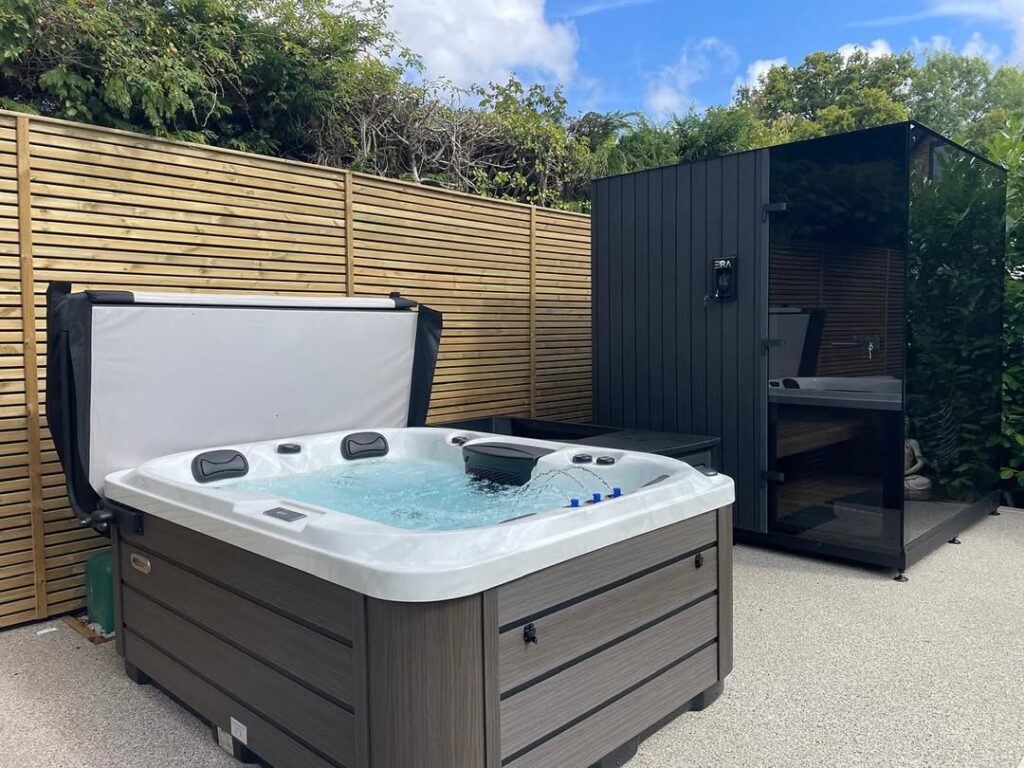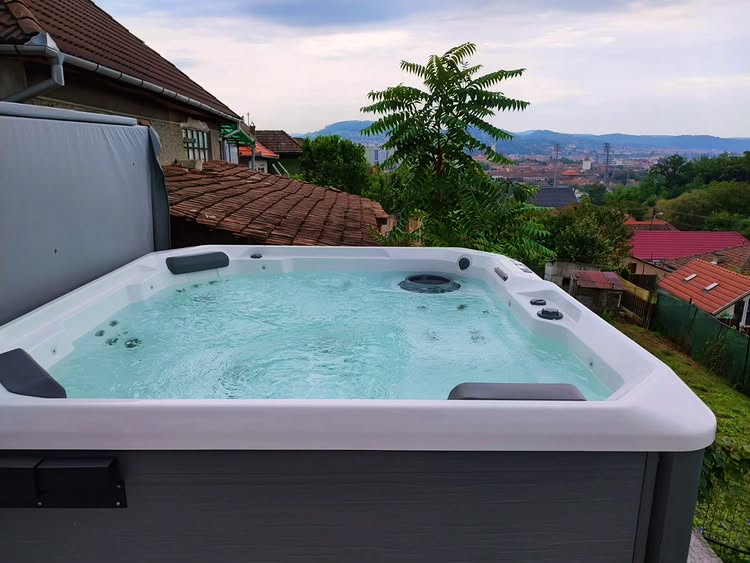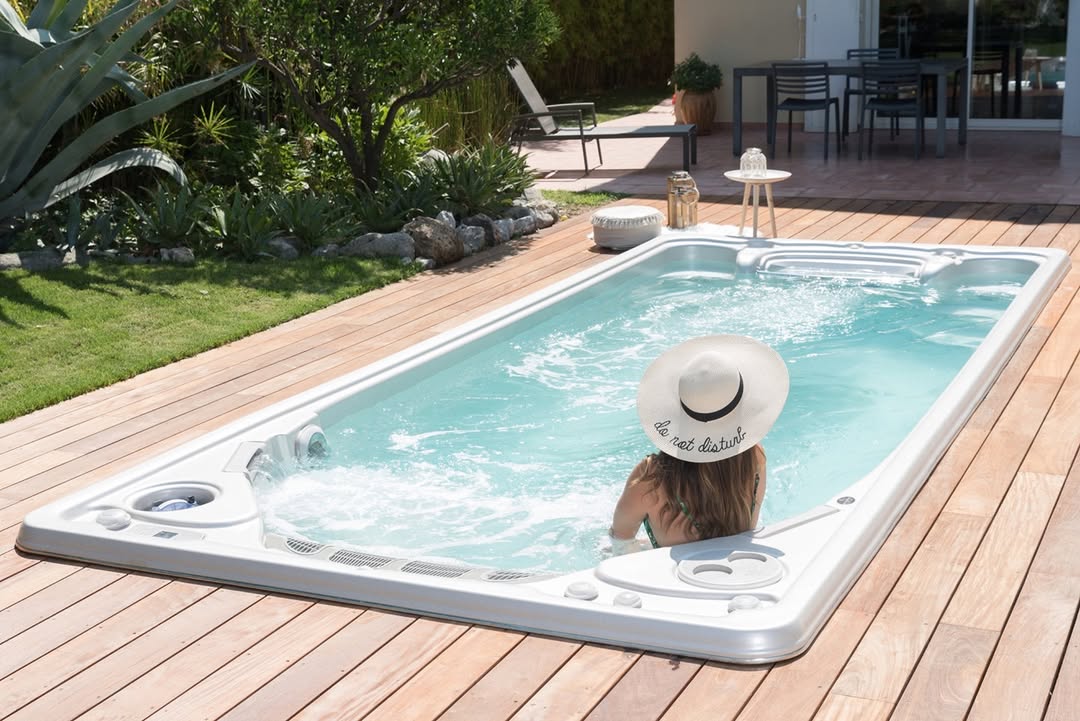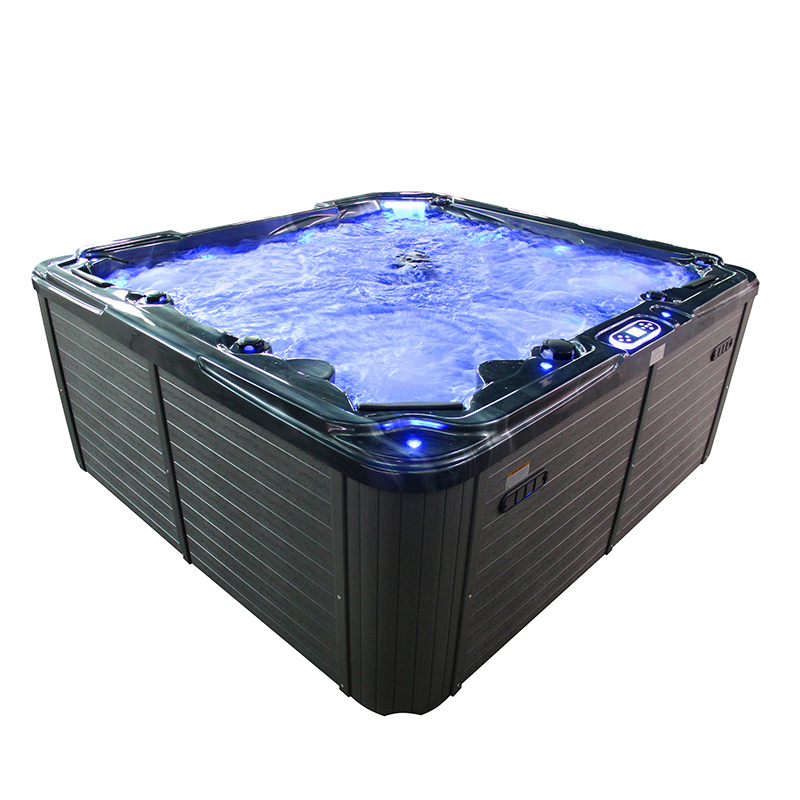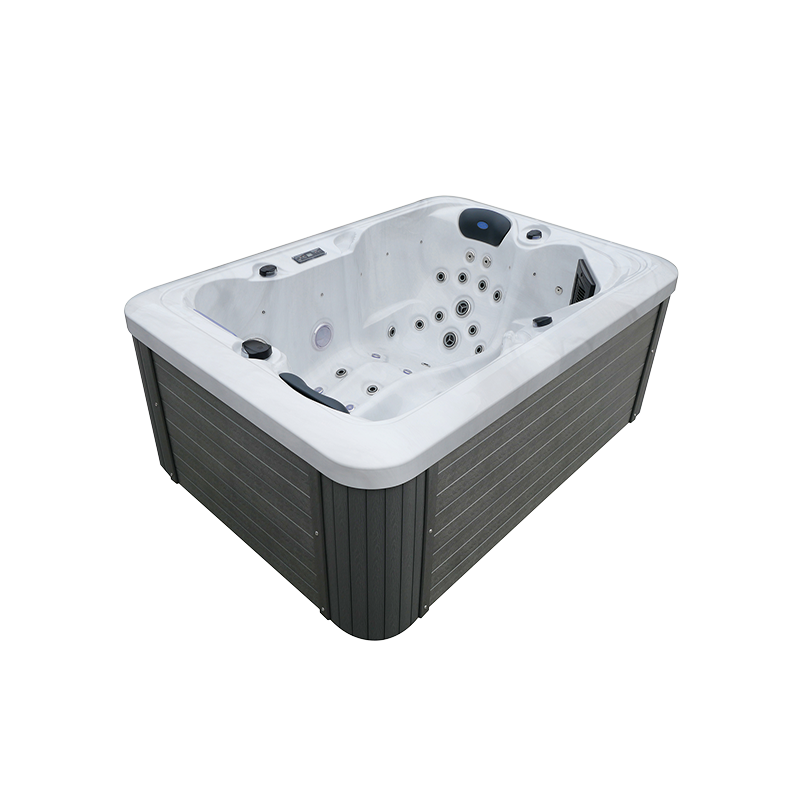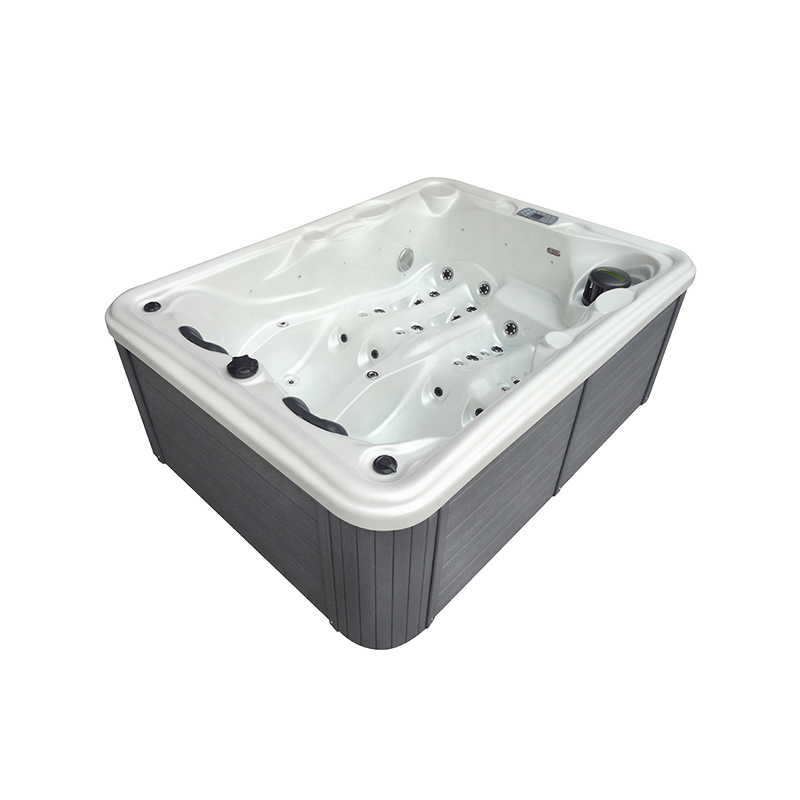Heat therapy has long been celebrated for its wide range of wellness benefits. From relieving stress to soothing muscle pain, the use of heat can be a therapeutic practice that many enjoy. When considering heat therapy, two of the most popular options are hot tubs and saunas. Both provide relaxation, stress relief, and muscle recovery, but how do they compare when it comes to specific needs and wellness goals?
In this article, we will explore both hot tubs and saunas, compare their health benefits, and answer the common question: “Which is better for different needs?” By the end of this article, you should have a clear understanding of which option suits your preferences and lifestyle, helping you make an informed decision between a hot tub and a sauna.
1. What is a Hot Tub?
A hot tub, also known as a spa or jacuzzi, is a large tub filled with hot water in which people soak for relaxation and therapeutic benefits. Hot tubs can be used alone or shared with others, making them a great social activity as well. But beyond the enjoyment, hot tubs offer several health benefits. According to research, hot water immersion can improve circulation, reduce stress, and even aid in muscle recovery.
The Science Behind Hot Tub Health Benefits
Hot tubs use the therapeutic properties of warm water to provide relief for sore muscles and joint pain. When you immerse your body in warm water, the buoyancy reduces the stress on your joints, allowing for more comfortable movement. Water pressure helps to promote better blood flow, which in turn helps heal muscle and joint injuries. The warmth of the water also improves flexibility and reduces stiffness in your joints, which can be particularly beneficial for those with arthritis or muscle tension.
A study by Jonathan B. Smith, Ed.D., titled “Hot Water and Healthy Living,” outlines some of these benefits, specifically how water immersion increases circulation, reduces swelling, and enhances joint mobility.
Additionally, regular hot tub use can have heart health benefits. The pressure exerted by the water can improve blood circulation by pushing blood toward the heart, which helps the heart work more efficiently. This has been shown to lower blood pressure and improve overall cardiovascular health.
Ideal Hot Tub Temperature
When using a hot tub, it is crucial to ensure the water temperature stays within safe limits. The U.S. Consumer Product Safety Commission recommends that hot tubs should not exceed 104°F (40°C). A temperature of 100°F (38°C) is typically considered safe for most healthy adults.
2. What is a Sauna?
A sauna is a small room designed to create an environment of dry heat or steam, offering a space for relaxation and therapeutic use. Saunas have been used for centuries, particularly in Finnish culture, to cleanse the body and rejuvenate the mind. Like hot tubs, saunas have been shown to offer a variety of health benefits, including improved circulation, stress relief, and muscle relaxation.
The Health Benefits of Sauna Use
The Mayo Clinic reports that regular sauna use is linked to a reduced risk of cardiovascular disease, pulmonary conditions, and neurocognitive diseases. The heat causes your heart rate to rise, much like exercise, and increases circulation, which can benefit your heart health.
Additionally, sitting in a sauna can help relieve muscle soreness and tension. The heat helps to dilate blood vessels, promoting blood flow to muscles and tissues. This can be particularly beneficial for athletes looking to speed up recovery after strenuous exercise. Moreover, saunas may aid in detoxification by promoting sweating, which helps to expel toxins from the body.
Routine sauna sessions have also been associated with decreased stress levels and enhanced relaxation, as the warm environment allows the body to release tension. Some studies even suggest that saunas may help alleviate symptoms of depression and anxiety.
Ideal Sauna Temperature
The temperature in a sauna varies depending on the type of sauna. Traditional Finnish saunas generally have a temperature range of 150°F to 190°F (66°C to 88°C), while infrared saunas tend to have a lower temperature, around 120°F to 140°F (49°C to 60°C). The exact temperature for each sauna type can depend on personal preference, but it’s important to listen to your body and avoid overheating.
3. Hot Tub vs. Sauna: Which is Better for Different Needs?
Both hot tubs and saunas offer similar health benefits, but their specific features make them better suited for different needs. Below, we’ll compare the two based on various factors to help you decide which one might be best for you.
A. Stress Relief and Relaxation
If you’re seeking relaxation and stress relief, both a hot tub and a sauna can help. The hot water in a hot tub can soothe tense muscles, relax the mind, and help you unwind after a long day. The buoyancy of the water also helps relieve pressure on your joints, making it ideal for those with arthritis or other musculoskeletal conditions.
On the other hand, saunas offer a dry heat that promotes sweating and increases heart rate, creating a similar effect to light exercise. The calming environment of a sauna allows you to mentally unwind and enjoy a peaceful, quiet space. If you prefer solitude and a break from external distractions, a sauna may be the better choice.
B. Cardiovascular Health
Both hot tubs and saunas can have positive effects on cardiovascular health. The heat from either one dilates blood vessels, improving circulation and lowering blood pressure. However, saunas, particularly the traditional Finnish variety, are often considered more beneficial for heart health due to their ability to increase heart rate and promote cardiovascular fitness through intense heat exposure.
In contrast, hot tubs also offer cardiovascular benefits, but they tend to be more relaxing due to the buoyancy of the water. The pressure of the water on your body can help enhance circulation and ease tension, making hot tubs a great option for heart health without the intense heat of a sauna.
C. Muscle Recovery
For muscle recovery, both hot tubs and saunas can be highly beneficial. The heat from the water in a hot tub helps relax muscles and relieve soreness, especially after exercise. The buoyancy of the water helps alleviate pressure on joints and promotes flexibility.
Saunas, however, work by increasing blood flow to muscles through dry heat, which can also aid in muscle recovery. The ability to sweat in a sauna may help flush out toxins and promote overall muscle relaxation. For individuals looking for a deeper recovery process, a sauna may offer more profound benefits.
4. Additional Features of Hot Tubs and Saunas
A. Hot Tub Jets and Massage
One of the major advantages of a hot tub over a sauna is the availability of jets that provide a hydromassage experience. The jets create targeted pressure that helps massage sore muscles and relieve tension. For individuals seeking a more therapeutic experience, the added benefit of a hot tub’s jets can make a significant difference in muscle recovery and stress relief.
B. Socializing vs. Solitude
Another key difference between hot tubs and saunas is the environment they provide. Hot tubs tend to be more social spaces, where friends and family can gather and relax together. Saunas, on the other hand, are often more suited for individual use, offering a peaceful and solitary experience. Depending on your preferences, this could influence your decision.
5. Hot Tub vs. Sauna: Quick Comparison Table
| Trekk | Boblebad | Sauna |
|---|---|---|
| Heat Type | Warm water | Dry heat or steam |
| Health Benefits | Improves circulation, relieves muscle and joint pain, stress relief, heart health | Increases heart rate, improves circulation, reduces stress, muscle relaxation, detoxification |
| Temperature Range | 100°F – 104°F (38°C – 40°C) | 150°F – 190°F (66°C – 88°C) for Finnish saunas; 120°F – 140°F (49°C – 60°C) for infrared saunas |
| Ideal Use | Muscle recovery, stress relief, relaxation, socializing | Cardiovascular health, muscle recovery, detoxification, mental clarity |
| Social vs. Solitary | Social, good for gatherings | More solitary, great for quiet relaxation |
| Additional Features | Jets for hydromassage, buoyancy | Steam or dry heat, relaxation |
6. Frequently Asked Questions About Hot Tubs and Saunas
Q1: Can I use a hot tub and sauna together for maximum benefits?
Yes, many people enjoy alternating between a hot tub and a sauna for a complete wellness experience. The combination of hot water immersion and dry heat can provide a balanced approach to stress relief, muscle relaxation, and cardiovascular benefits.
Q2: How often should I use a hot tub or sauna?
For most people, using a hot tub or sauna 2-3 times a week can provide significant health benefits. However, it’s important to listen to your body and not overdo it. Always stay hydrated and avoid staying in either environment for too long.
Q3: Are hot tubs and saunas safe for everyone?
Both hot tubs and saunas are generally safe for healthy adults. However, people with certain medical conditions, such as heart disease or skin disorders, should consult with a healthcare provider before using them. Pregnant individuals should also seek medical advice before using either option.
Konklusjon
Whether you choose a hot tub or a sauna depends on your personal wellness goals, preferences, and lifestyle. Both options provide similar health benefits, including relaxation, stress relief, improved circulation, and muscle recovery. If you enjoy the therapeutic effects of water and hydromassage, a hot tub may be the best choice for you. If you prefer a quiet, dry heat experience to relax and improve cardiovascular health, a sauna might be more suitable.
Ultimately, the decision between a hot tub and a sauna comes down to your personal needs and the environment you enjoy. Both can enhance your well-being, so take the time to explore each option and find what works best for you.


